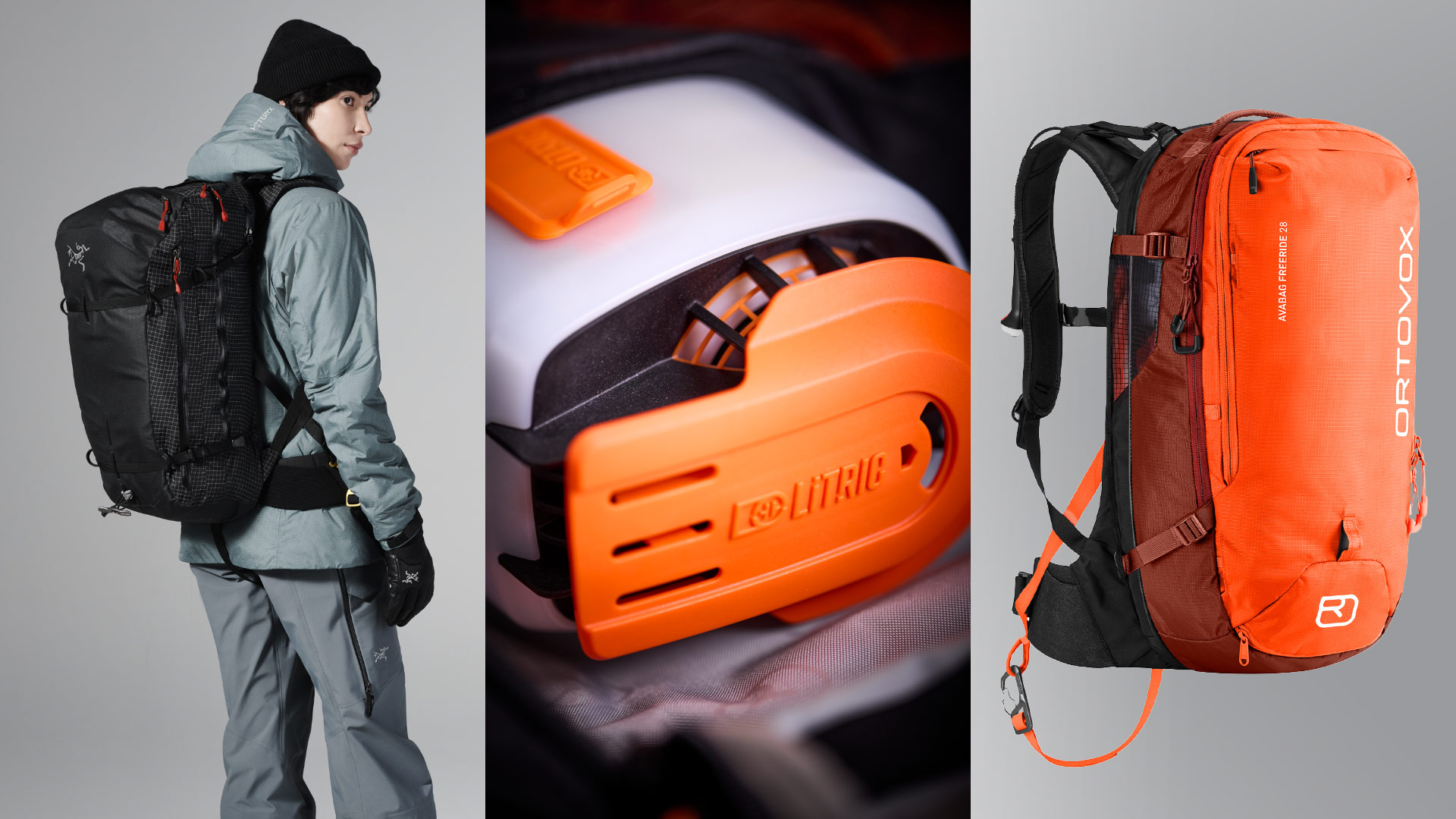
Gear
Light electric
LiTRIC: The next step in avalanche safety
Airbag systems have come a long way in increasing avalanche safety over the past two decades. However, compared with most other safety equipment they are still a relatively new component, with a lot of room for improvement. Arcteryx and Ortovox, two leaders in backcountry gear, have joined forces to take the next step in developing airbag systems for skiers who want to safeguard their powder adventures. The new LiTRIC system, created in a collaborative effort by these two companies, employs an electric blower to inflate the airbag.
LiTRIC—the name comes from the combination of “light” and “electric”—was recently introduced to a selected group of journalists via video conference. While this media event was well executed by the product managers and PR specialists, a hands-on experience of this potentially ground-breaking system would have been much better. This was one of the moments when ISPO—the annual sports tradeshow in Munich, now cancelled for two years due to the pandemic—was truly missed. Therefore, this article provides a summary of that presentation without a practical analysis of whether or not the product really holds up in the field. I’m fairly confident that most of these points will hold true in reality, but until we have a working sample to test, they’ll have to wait for confirmation from our end. That said, there are a few very interesting elements of the new LiTRIC system. For starters, it’s a unique collaboration between two brands that already had great, well-functioning systems for avalanche airbags on their own before they started to work on the new system.
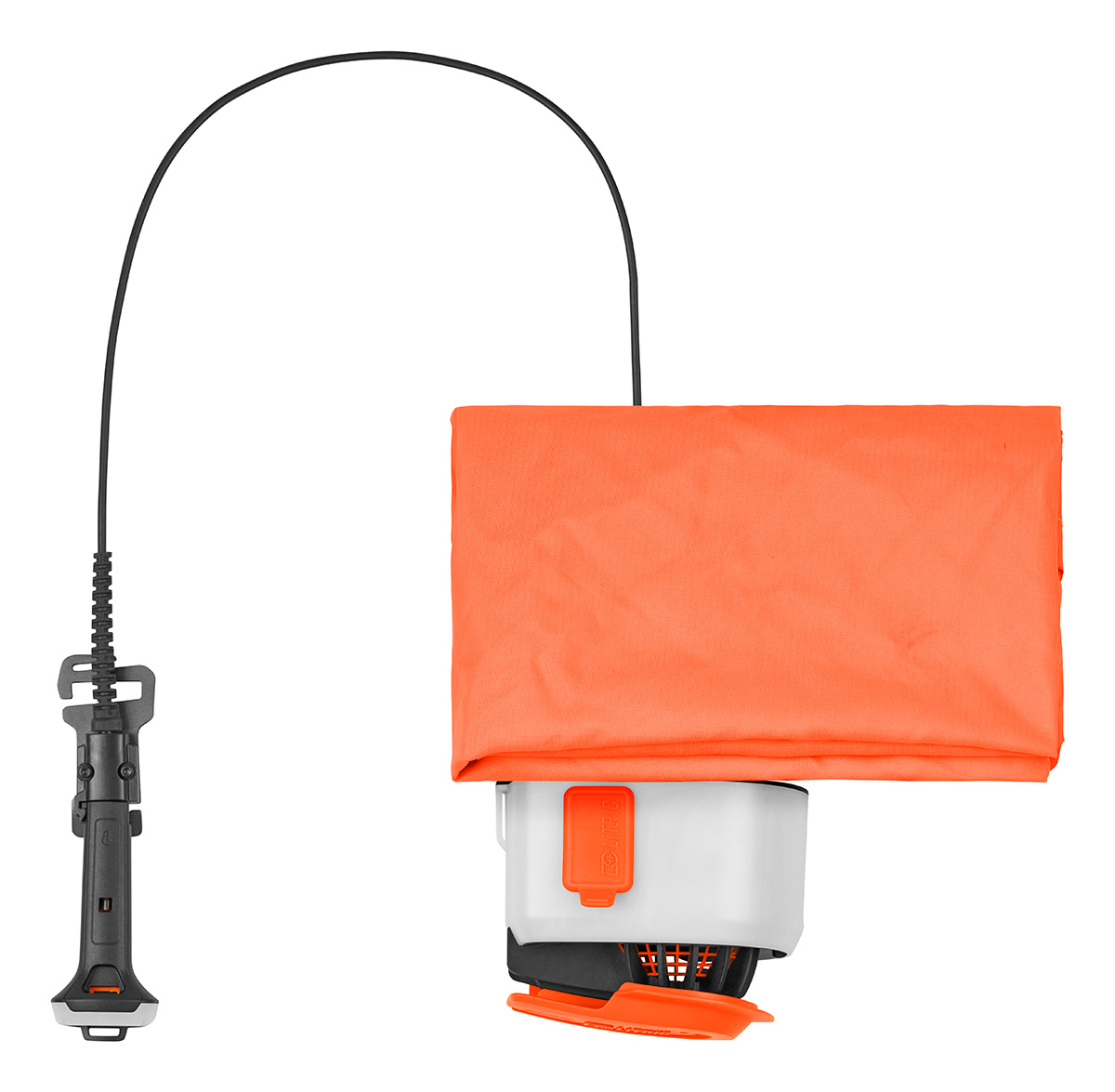
The LiTRIC airbag system weighs in at just over a kilogram.
The main motivation for the LiTRIC design process, as Ortovox product manager Patrick Wesch explains, was further improving avalanche safety for backcountry skiers. This depends not only on good equipment, but also on the proper education and training. The existing Avabag backpacks from Ortovox employ a traditional pressurized cartridge, which is among the lightest options on the market. However, the product team felt that an option with an electric blower was favorable because it allows for realistic training—that is, actually deploying the airbag—without any associated costs. As someone who has first-hand experience with such fan-driven systems and actually has pulled the trigger while skiing for training reasons, I am very much in support that point of view. Actually deploying an airbag is an experience that every backcountry skier should have before encountering a real emergency situation. There are also other advantages to an electric-fan system: the possibility of multiple releases without the need to exchange a cartridge, a potentially smaller size of the system, less trouble with air travel (some countries and airlines don’t allow compressed air cartridges on their planes).
Arcteryx, on the other hand, already had an electric blower system in place, but struggled in the weight department. After several years of development on their Voltair system, they were still struggling to make it as light as some of the cartridge-powered competition. When Ortovox approached them with the idea of creating an improved electric system together, they eagerly entered the collaboration.
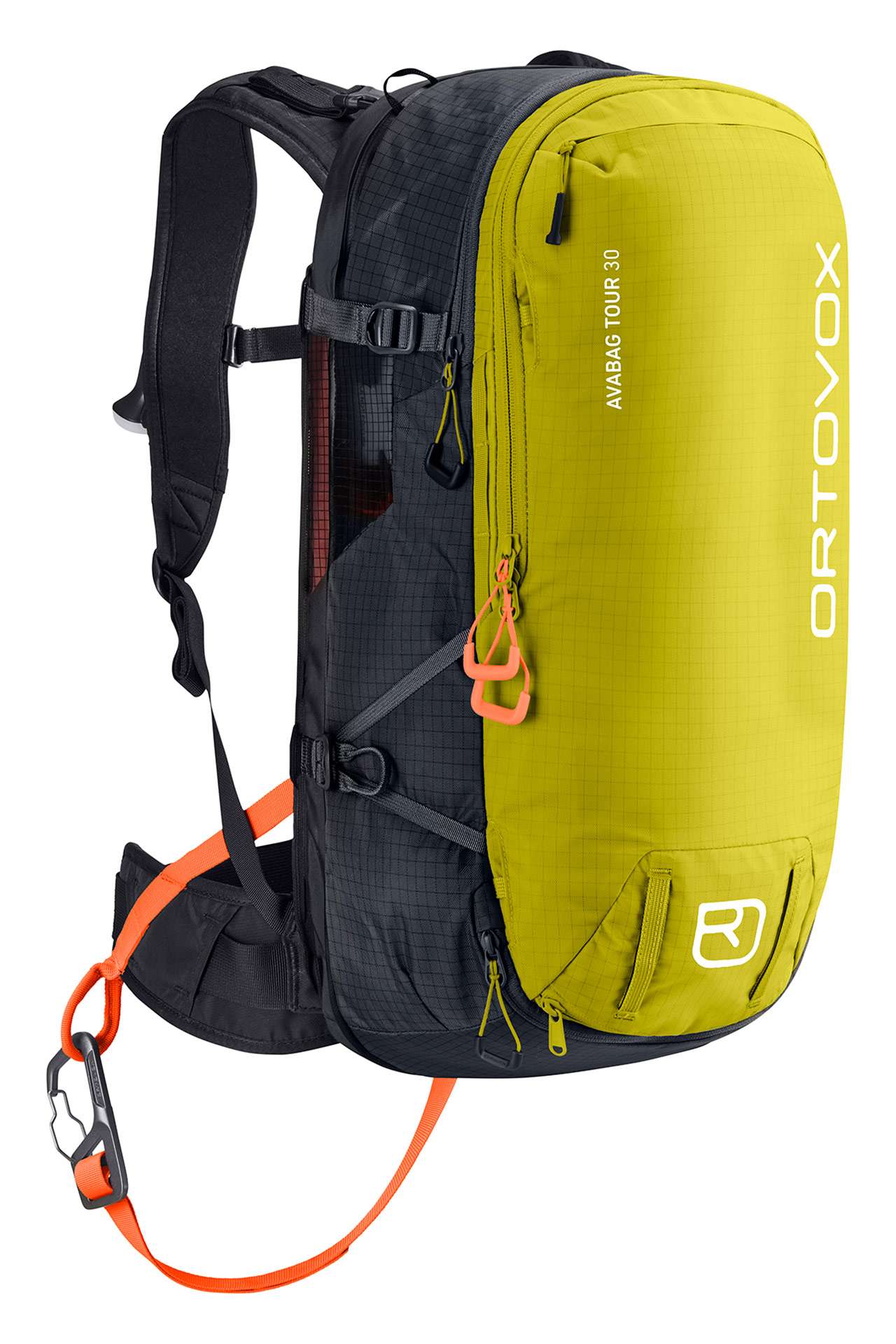
The Avabag LiTRIC Tour 30 from Ortovox.
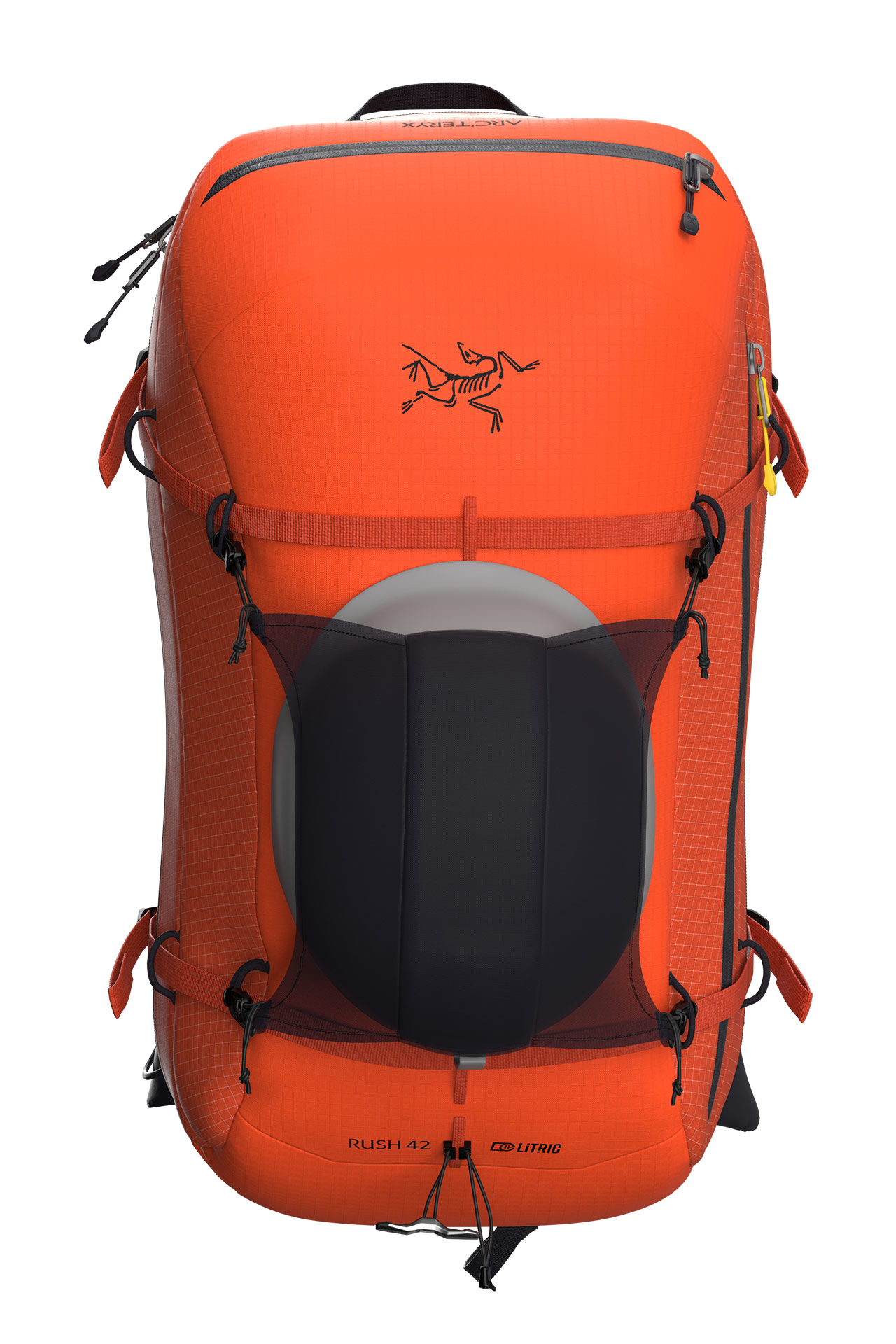
Arcteryx´s Rush 42L LiTRIC backpack.
In a combined effort, the two companies managed to make improvements on many fronts. The most important one might well be the use of capacitors to power the blower, rather than working directly off the battery as the Voltair system did. Capacitors release their stored energy much faster than a battery, and are less affected by temperature. They’re also much lighter. The capacitors still require a charge from a battery in order to allow for multiple releases without plugging the system to a power circuit. But since this recharge process doesn’t need to be as fast as actually powering the blower (it takes about 20 minutes following a release until the system is ready again) the battery can be much smaller than a system without capacitors. As a result, the whole LiTRIC airbag system—including the battery, blower unit and the actual airbag—weighs in at just over a kilogram, making LiTRIC-equipped backpacks among the lightest on the market.
Other improvements include a new packing mechanism that is much easier to handle—no specific folding of the airbag is needed—and more robust than traditional systems that rely on special zippers. Another nice touch is the handy twist mechanism on the release handle that turns the system on and off quickly and effortlessly, as well as a general interface that’s optimized for intuitive handling. The whole release and blowing unit is produced in close proximity to the Ortovox headquarters in Bavaria, allowing for high production quality as well as stringent environmental and social standards during production.
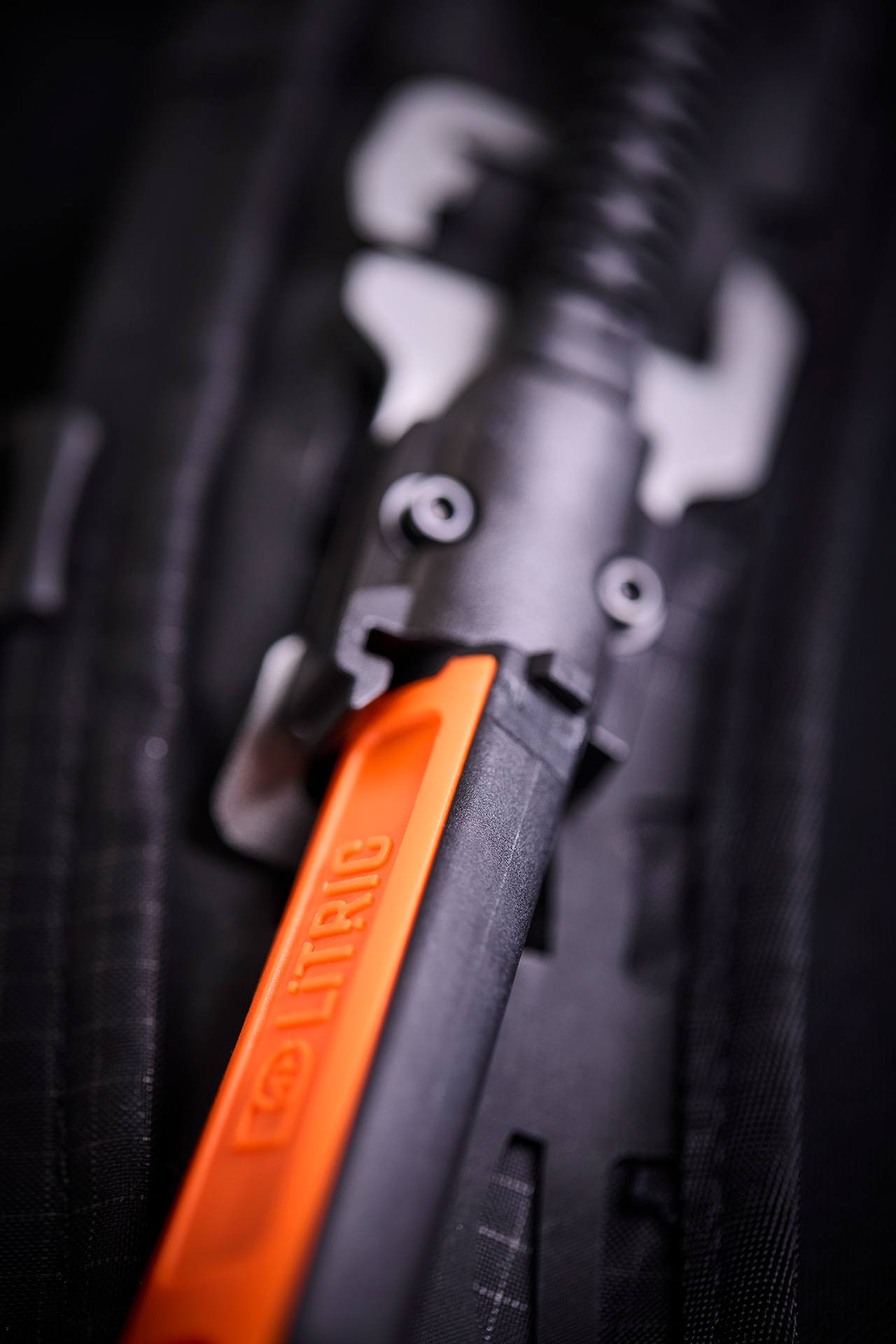
The LiTRIC release handle on an Ortovox bag.
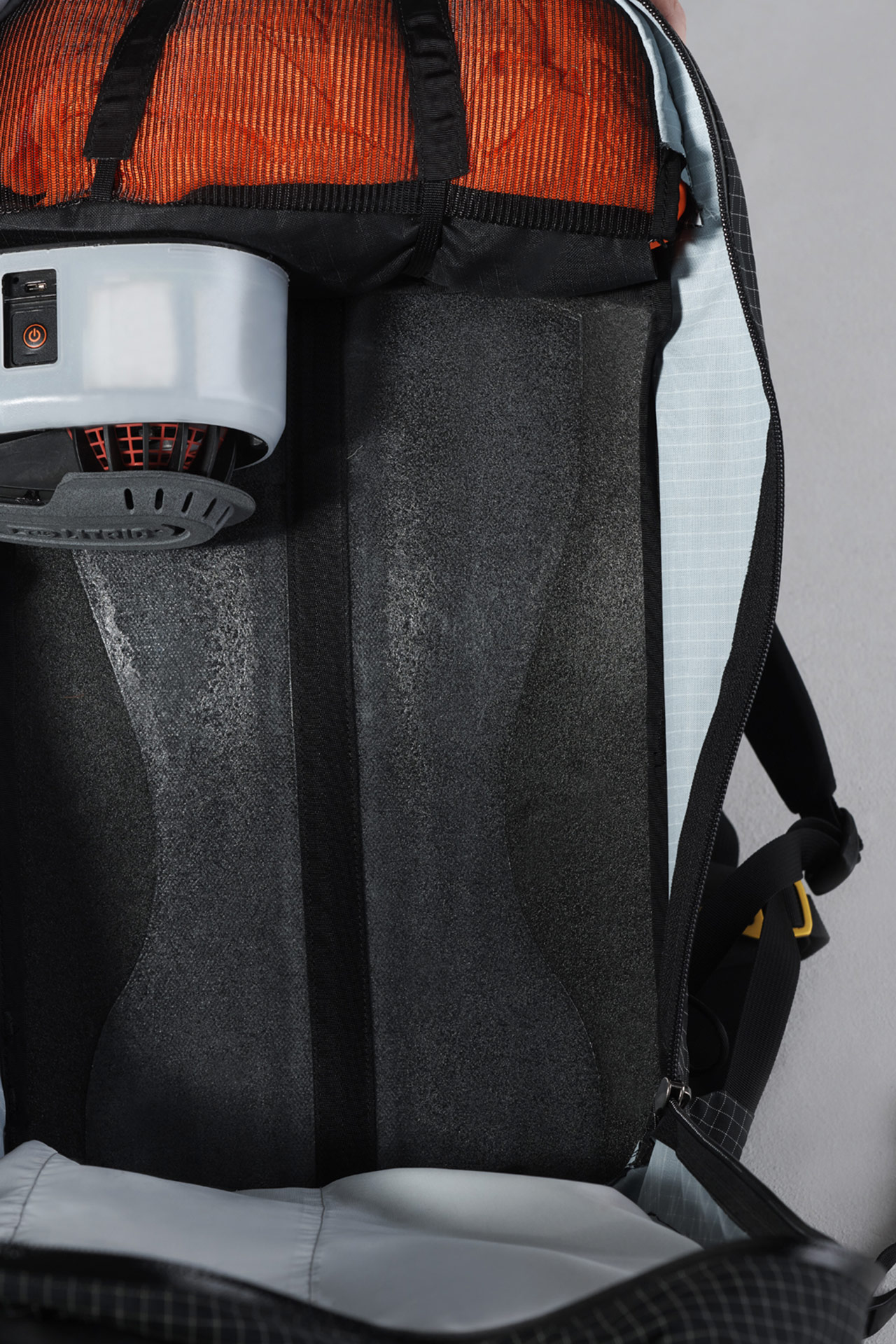
Interior of a LiTRIC-equipped Arcteryx bag.
While the LiTRIC system is a cooperation between Ortovox and Arcteryx, both companies continue to design their backpacks individually. This means that there’s quite a variety of actual LiTRIC-equipped avalanche packs available for season 2022/23. Ortovox will offer a system that employs a base unit for the airbag system, which can then be combined with packing units in four different sizes from 16 to 40 liters. On top of that, there will be a dedicated super lightweight, mid-volume product for the clientele with the highest performance demands. Arcteryx, on the other hand, will offer three dedicated packs for different target groups, ranging from 16 to 42 liters in volume. Both ranges will follow the specific design philosophies of each brand. Both companies intend to keep the LiTRIC system exclusive to themselves for the foreseeable future, so we won’t see any third-party offerings anytime soon.
We’ll dive deeper into the details of the LiTRIC packs as soon as we get samples for real-world testing in our hands. Until then, I’ll spare you from more technical details. Considering prospective prices of over €1000 for all of the above-mentioned LiTRIC packs, it’s a given that conusmers will want to thoroughly consider all aspects before buying. While this price point may seem very high, it might well be worth the investment. At least some of the price is also due to pandemic effects. As Patrick Wesch revealed, Ortovox originally planned for prices below €1000 per pack, but an extreme shortage of electronic components ruined that plan. Be that as it may, when it comes down to it, a potentially life-saving piece of equipment might be worth any price.
More information on the LiTRIC airbag system is available at litricavalanchesafety.com.
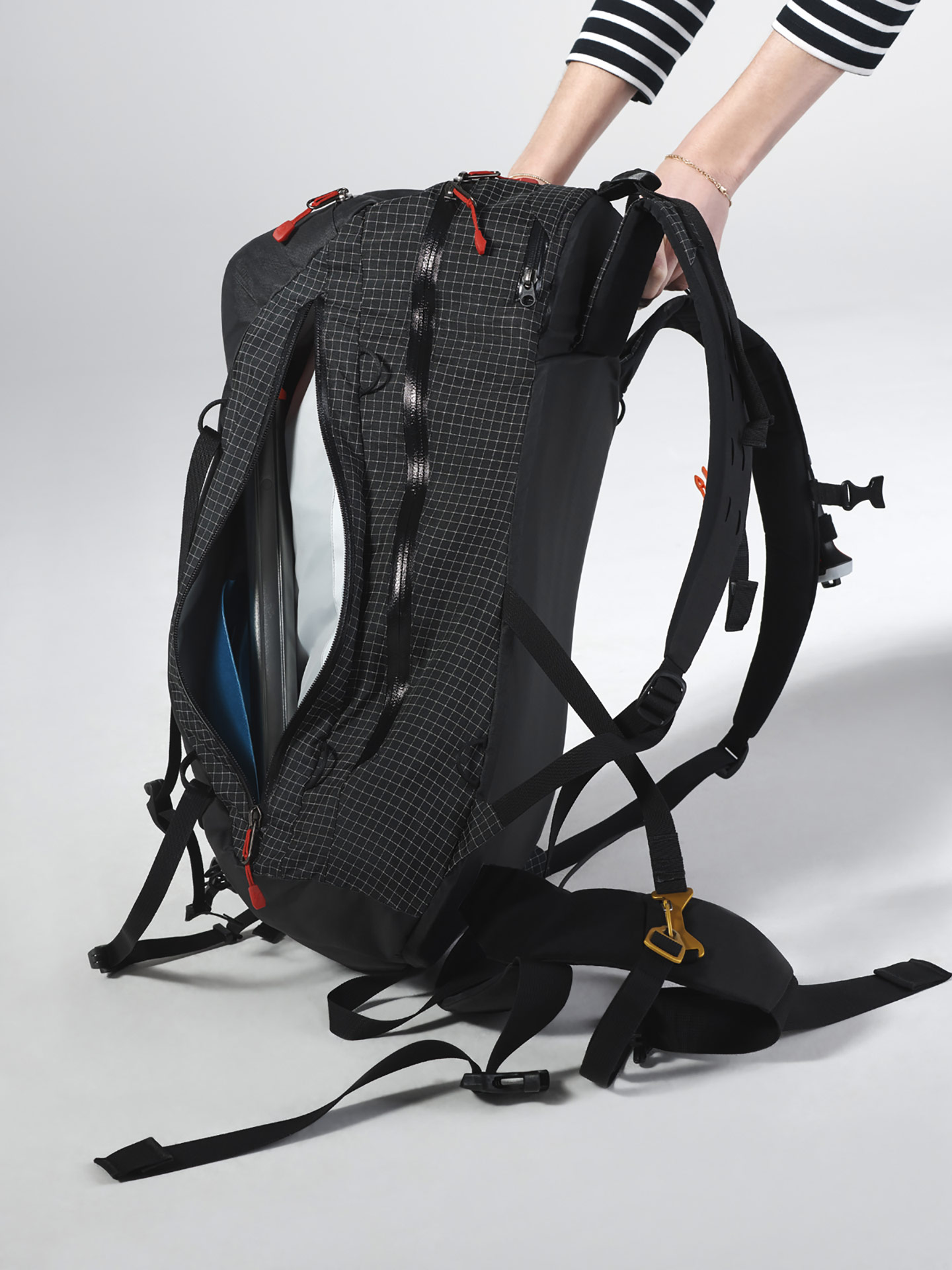
Arcteryx´s 32-liter LiTRIC backpack.
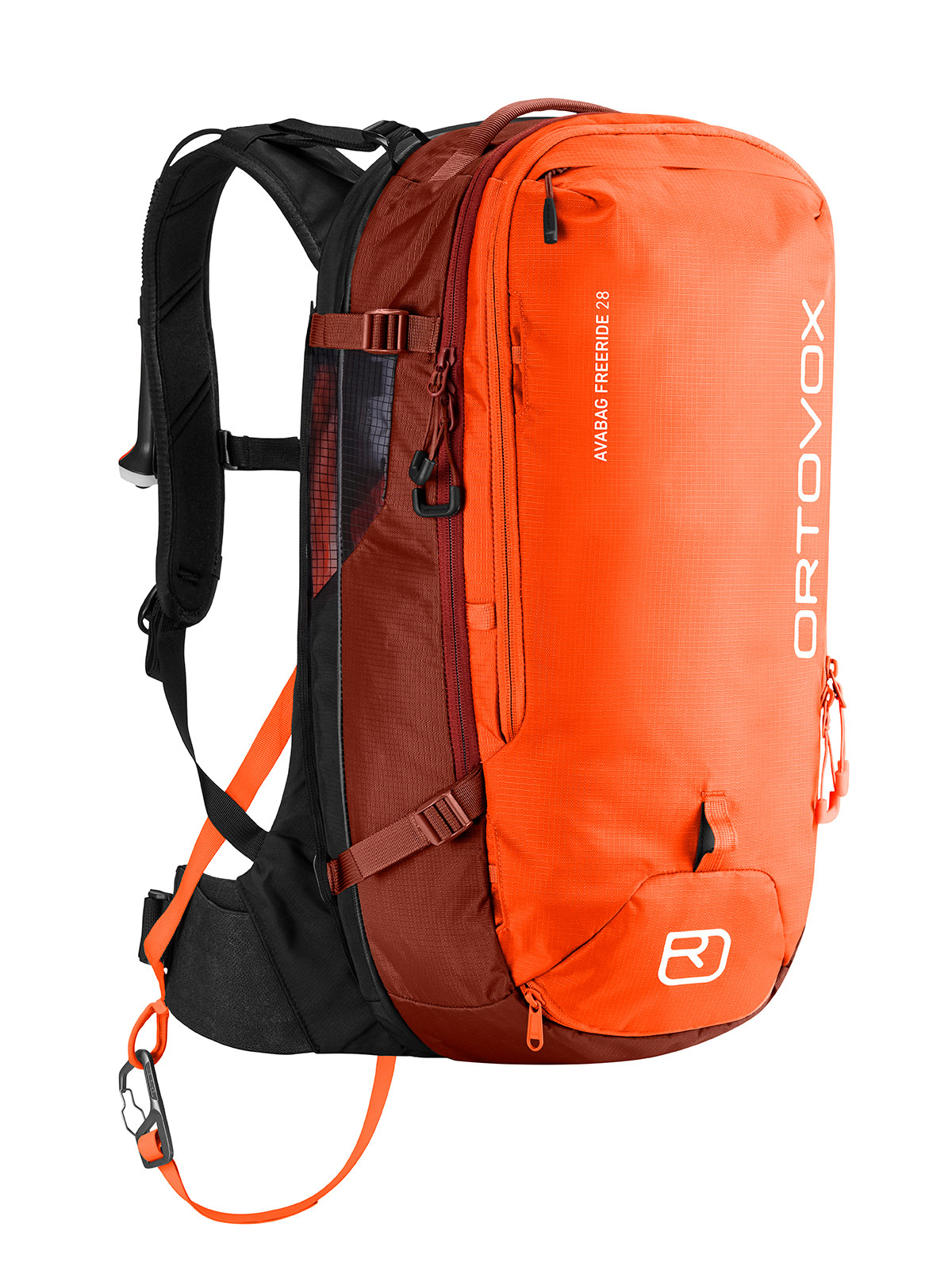
The 28-liter Freeride Avabag from Ortovox.
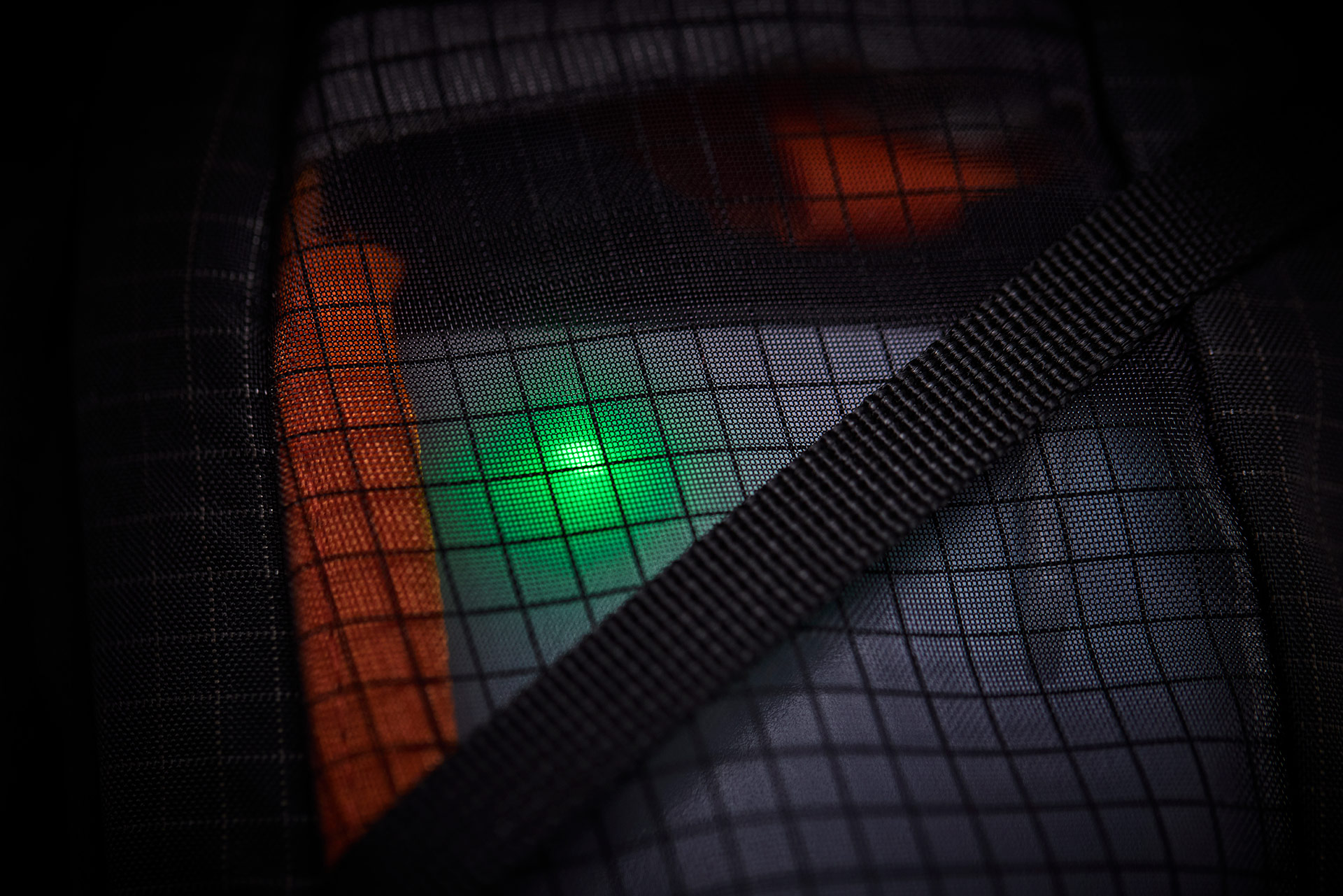
Power´s on.
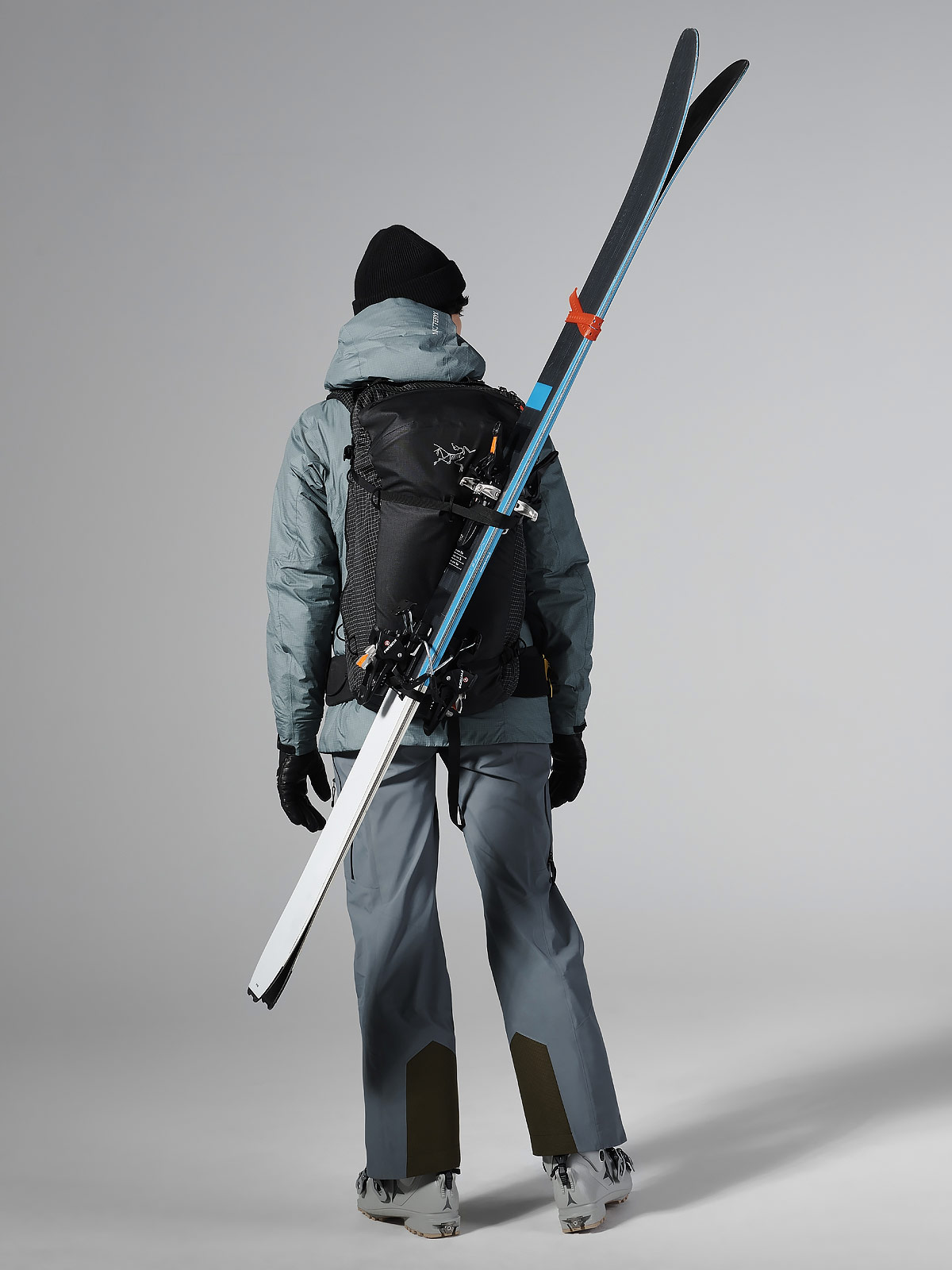
Ski carry system on the 32-liter Arcteryx bag.
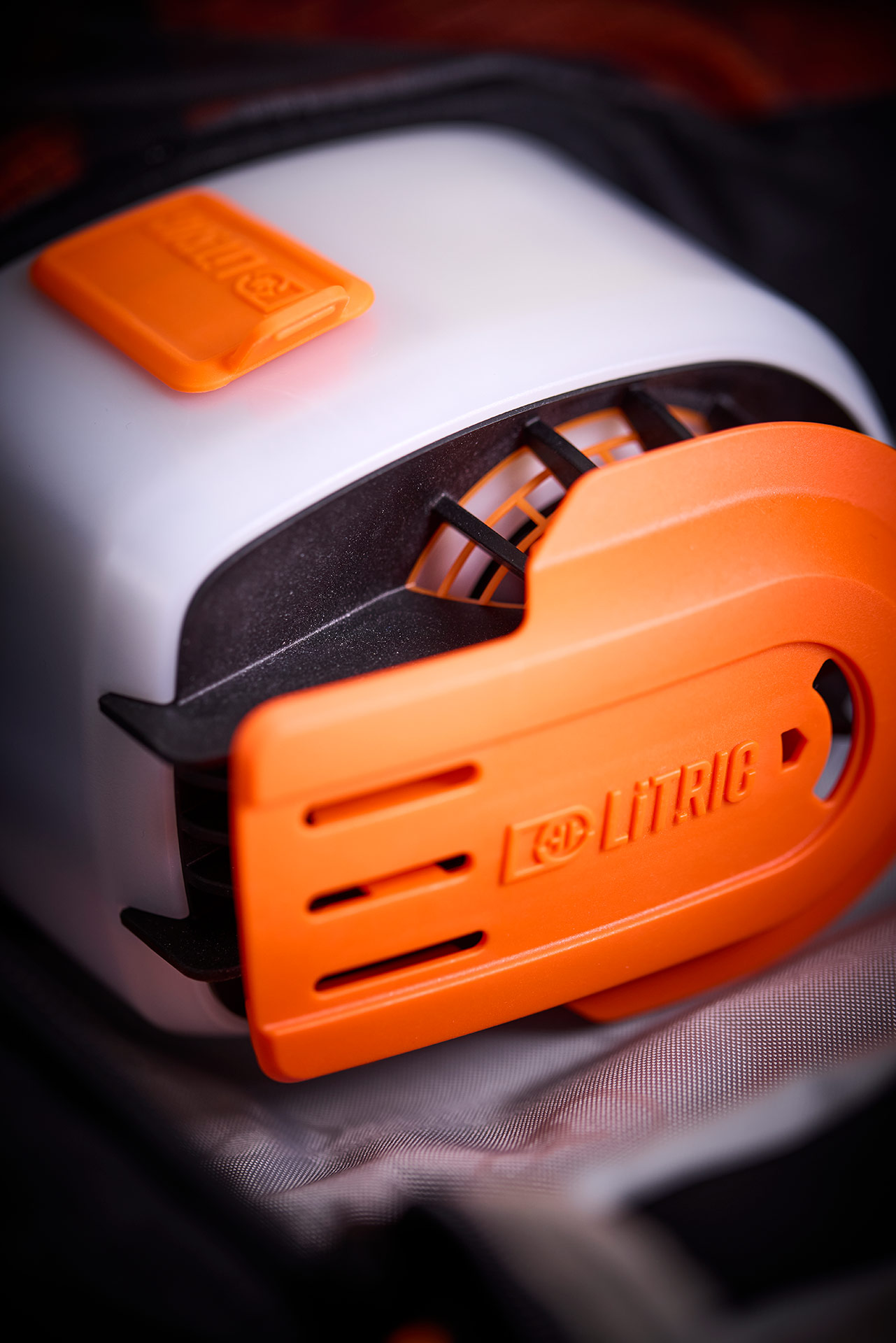
The LiTRIC blower element.